Giriş
Use this guide to replace Apple's proprietary blade SSD (AHCI/SATA).
This guide is intended for the higher spec iMac Intel 21.5" EMC 2544 models that are equipped with an SSD (Fusion Drive or blade SSD configurations).
Neye ihtiyacın var
-
-
Starting on the left of the display, near the power button, insert the iMac Opening Tool into the gap between the glass panel and the rear enclosure.
A thin razor blade works well, but be careful to angle the sharp edge AWAY from the glass. Whatever tool you use you can easily scratch the paint on the back of the glass, which will show up when you look at he reassembled Mac on an angle later.
This was a great guide!
-
-
Bu adımda kullanılan alet:Plastic Cards$2.99
-
Starting from the top right corner of the iMac, wedge a plastic card between the display and frame.
So sorry. Thanks for that caution.
Using suction cups (the ones that were made for removing the magnetic front glass on the 2011 and earlier iMacs) work well too. Place one in each top corner, while the Mac is lying face up on a table, and gently pull and it will separate the display from the main body. You might need to do a little more slicing around the edges if you did not get all the way through the first time with the roller. Then you can lift the display up at an angle to disconnect the cables.
This was a great idea, worked well for me. Thanks!
Florin -
-
-
-
With both plastic cards inserted as shown near the corners, gently twist the cards sideways to increase the gap between display and case.
-
Begin to lift the top of the display up from the frame.
-
-
-
While holding the display up with one hand, use the other hand to unplug the display power cable. Make sure that you pull the cable out from the plastic tab, and not by pulling on the color wires.
-
-
-
Lift the display up to a near-vertical position.
-
-
-
-
Grasp the small tab at the end of one of the bottom edge display adhesive strips and pull the adhesive toward the top of the iMac to remove it.
-
Repeat this step with the other adhesive strip and remove it.
The roller tool for slicing open the display works great for this step. Get in there like using the card and roll across the bottom to slice through the remaining adhesive.
-
-
-
Lift the display up from the frame and remove it from the iMac.
-
It may be necessary to slowly lift from one side, to peel against the remaining adhesive.
After removing the display, I also removed the 3 screws for the processor fan, disconnected the power connector for it and set the fan shroud aside. Disconnecting the remaining cable (similar style to 1 of the cables for the display) that is in the way of the RAM chips is all that's left to do. I was then able to access and quickly remove the two Apple-provided RAM chips, and replace them with 3rd party RAM. Turning the iMac on its side, so that it's in a position where you're physically putting the RAM chips DOWNWARD into their respective slots is the best way to go about uninstalling and reinstalling the chips. Using a narrow but long'ish plastic spudger tool is the best way to defeat the spring-tabs which hold the RAM chips in place. After removing the LCD display, changing the RAM is about a 10 minute process!! And I'd SURE prefer not to remove all the parts and risk damage to the iMac via the standard procedure listed. As per usual, take your time and work gently :-)
Teardown the whole machine just to change RAM? While preparing to comment on this procedure I just noticed the comment made by Mitch K above. I ran pretty much the same procedure that he describes this afternoon (steps 1-23, 43-45, and step 55). Then I swapped out the original 2x4GB RAM chips for 2x8GB chips by reaching behind the logic board, releasing the spring retaining clips one chip at a time (starting with the chip further away from the logic board), pivoting the RAM towards the back of the machine, and then carefully sliding it out of the slot. I easily slid in the new chips and then pivoted them to lock them down. No hassle, no time lost. As Mitch K states above, not only is this “shortcut” method much quicker and easier, but it provides less risk of damaging cables, sockets and other delicate components during a total teardown. Why mess with the power supply board just to change RAM? I do not advise to follow the current iFixit.com procedure written by Sam Lionheart, regardless of user skill-level.
THAT sounds one !&&* of a lot easier than the full tear down. I wonder if there’s a video of the process described by Mitch K? Adding that to these verbal instructions would really help relieve the apprehension and anxiety around the process! I do sometimes find the additional warnings, though appreciated from a “safety first” perspective, are somewhat overstated. It’s been a very long time since I shorted out RAM, or fried a PCB, or broke a connector, regardless of how finicky, fragile or awkwardly designed and positioned. I may have WANTED to break something, and the air might be blue for a few seconds, but inevitably, things go back together, the start button gets pressed, the startup chime sounds, and we’re in business. Practice DOES make as close to perfect we are likely to get.
Mitch has the exact method that works a treat. You don’t need to follow steps 24-37 and also 40-63. Step 51 is the step to remove the camera cable and is needed. Steps 38 and 39 are for the Fan. That is all that is needed. Done quite a few like this.
Be careful not to drop the RAM down the back of the logic board!
By NOT removing all the other stuff you can avoid either damaging it or forgetting to plug in a cable.
I just trued this shortcut and it was not successful. I was not able to seat both RAM chips with this shortcut, and managed to slightly damage one of the retainer clips. I simply could not manipulate the chips into and out of the slots effectively without taking everything apart as described in the full set of steps.. I ended up retracing my steps and following the entire procedure, carefully, and that worked without incident. So, bottomline, it is definitely more work to follow all the steps but from my experience, it is decidedly safer. Your mileage may, of course, vary. It was successful in the end, and I swapped out the hard drive with an ssd during the same procedure and my machine is very, very much faster.
I have completed by following the Mitch K post and it is much easier than stripping down the whole thing, just be aware that to remove and replace the ram chips means working in a tight space, you need slim fingers and don’t be tempted to use force, take your time.
Well, I have slim fingers, but they are 60 years old, and they don’t work like they used to! LOL.
Agree with Mitch K’s procedure. The only added tip I would throw in is to use two 45 degree tweezers with their plastic covers still installed to easily pop loose the RAM. I couldn’t get the plastic spudger tool to work myself, but the tweezers easily reach the RAM clips. Just make sure the plastic covers are installed and you won’t be in danger of scratching or shorting anything out.
So thankful I discovered these comments. Saved me a TON of time! Thank you!!
These comments were very useful. Thank you. I just needed to modify a pair of tweezers to allow me to seat the new RAM more easily. The ifixit screwdriver wasn't able to turn some of the screws as they were installed too tightly, and I didn't want to wait to order and reveive a pair of right angled Torx screwdrivers that would give me more leverage to get those boards off.
-
-
-
Remove the following five Phillips screws holding the lower support bracket in place:
-
Four 3.2 mm screws
-
One 1.7 mm screw
-
-
-
Remove the lower support bracket from the iMac enclosure.
Of all the parts of this entire procedure, replacing this one piece is the hardest part! The screws are tiny and they just don’t seem to want to grab the support piece. Also it seems to perform no function which is also annoying.
I left mine out. LOL
Line up the screw holes and press on the bracket from the back to help the screws grab. If your fingers are too big, press with the flat side of your spudger. As long as there’s no gap between the bracket and the iMac’s frame, the screws should grab easily.
I put it in at a slight angle lining up the right hand side holes, screwed in the two screws and gently pressed my finger behind it on the rest
If you only want to replace the HD and RAM, take a big shortcut and leave the logic board in, as well as all the parts needed to remove it (speaker, power supply etc). Once the display is removed, just take out the fan and the top two logic board screw. There is than sufficient space to gently remove and insert the two ram modules. HD can easily be replaced with an SSD by just removing the HD mounting brackets...
Voces mudaram de modelo iMac, desta foto para proxima, esse modelo desta foto nao tem slot nvme. O da proxima foto sim. Voces me fizeram comprar un nvme por engano...
-
-
-
Use a spudger to loosen the right speaker cable's connector from its socket on the logic board.
-
Pull the connector downwards to remove it from its socket.
I highly recommend doing steps 27 and 28 first and then pull out the cable. It will give you more room on the right side of the cable to work with making this step that much easier.
The two corners of the connector are latches that need to be pushed toward the center of the connector to release. This is easily done with the pointed end of the spudger. Once the two corner latches are released, the connector comes apart easily.
-
-
-
Remove the following screws securing the hard drive bracket to the rear enclosure:
-
Two 21 mm T10 Torx screws from the left-hand hard drive bracket.
-
One 9 mm T10 Torx screw.
-
One 27 mm T10 Torx screw.
Pay attention to this photo and where the fan is. It is 180° from where the previous step shows it is oriented to you.
-
-
-
Use the tip of a spudger to push each side of the power button cable connector and gently "walk" it out of its socket.
-
-
-
Remove the two 7.2 mm T10 screws securing the power supply to the rear enclosure.
What if these are too tight to remove?
Hi Rafael,
Be very careful not to strip these screws. Use a new, accurate T10 bit and a driver with good leverage to loosen these screws.
They are T9 in my iMac
They were T8 screws on my machine.
-
-
-
Squeeze the DC power cable connector tab and pull it straight out of its socket on the back of the logic board.
what happens if you damage the power socket on the logic board?
The tab is on the bottom of the connector. You can’t see it. Squeeze the bottom of the connector close to the cables to properly release tab. Pulling straight out is important.
This step might be easier if you do the next step first (step 41) and then come back to this step.
I loosened the logic board attached to the power supply board. I then could easily remove the 2 power cables.
In the photo above, the index finger is shown squeezing the connector locking tab. Do this while using the flat end of a spudger to release the latch. Once the connector is moved about an eigth of an inch the latch is released and the connector should come out freely.
-
-
-
Gently pull the fan cable connector straight away from its socket on the logic board.
I don’t like to pull on wires as shown in the photos above. I used my index fingernail on the top corner of the connector and the pointed end of a spudger on the bottom corner to pull the connector straight out of its socket.
-
-
-
Lift the hard drive from the edge nearest the logic board and pull it slightly out of its recess.
-
-
-
Remove the single 7.2 mm T10 screw securing the hard drive tray to the rear enclosure.
-
-
-
Remove the hard drive tray from the rear enclosure.
Cables are routed through the backside of the tray. Take a picture for reassembly.
-
-
-
Push on each side of the left speaker cable connector with the tip of a spudger and gently "walk" it out of its socket.
As noted in the right speaker cable section, the two corners of the connector are latches that need to be pushed toward the center of the connector to release. This is easily done with the pointed end of the spudger. Once the two corner latches are released, the connector comes apart easily.
-
-
-
Use the flat edge of a spudger to flip up the metal retaining bracket on the iSight camera cable connector.
-
Pull the iSight camera cable straight out of its socket on the logic board.
-
-
-
Use the flat edge of a spudger to disconnect each of the four antenna connectors from the AirPort/Bluetooth card.
I broke off one of the antenna connectors when I took off the antenna wires, but the new 802.11ac card is working:) I seems the way to take off the wires is lifting it up from the wire side. In hindsight I just wasn´t careful enough.
how do I check a working logic board
If you have a pair of angled tweezers, they work well for grabbing under the connector so that you aren’t pulling on the wire. The head of the T10 screwdriver works well for pressing them back on.
iMac 2017 EMC 3069 this has the antenna brackets with two T5
-
-
-
Use the flat edge of a spudger to pry the headphone jack cable connector from its socket on the logic board.
Unlike the rest of the connectors on the logic board, this one lifts up away from the board rather than to the side. That “Push the cable slightly to the right.” notation is after the connector is free.
-
-
-
Remove the following screws securing the exhaust duct to the rear enclosure:
-
Two 6.3 mm T8 screws
-
Two 4.7 mm T8 screws
Weirdly, these screws didn’t work with my T8 driver. Not with T6 or T10.
Every other screw (to this point) has been fine. Hmm.
??? The T8 worked fine for me. Not sure what the difference would be.
Fare molta attenzione alla vite in fondo a destra, è facile (soprattutto se la punta del proprio cacciavite non è magnetizzata) che la vite si perda sotto alla Logic board. Se la punta del cacciavite non è magnetizzata consiglio o di utilizzare un magnete esterno o di utilizzare delle pinze mentre si svita la vite in modo da non incorrere in questo problema.
-
-
-
Remove the four 7.2 mm T10 screws securing the logic board to the rear enclosure.
When reinstalling the logic board, install four screws loose. Insert thumb drives into the back in all slots to ensure alignment. Once aligned, then tighten screws.
On some models there is a tiny microphone cable connector, just above the lower left logic board screw. Remove by carefully pulling straight down. There is also a piece of insulating plastic w/adhesive on top of the screw which can be pulled off prior to removal. Save and reuse with the same screw on installation.
-
-
-
Tilt the top of the logic board away from the rear enclosure.
-
Lift the logic board straight up and out of the iMac.
When inserting the logic board back, pay attention of the position of the I/O connectors. When it is back in place, put a USB / Thunderbolt cable into the connectors to ensure the perfect alignment.
This is fantastic advice. I used a combination of USB and display port plugs to ensure proper alignment and help keep the logic board steady while i screwed it back in. Thank you!!
kazoodac -
ive gotten this far and i still have one question, i’m replacing my HDD With A SSD should i also remove the original Blade drive ? and run exclusively off the ssd, ? i wasn’t 100 on whether or not i was getting the fusion set up so i’m not in possession of a upgraded blade, so i though this was a good question id hadn’t seen asked.
-
-
-
Remove the single Torx screw securing the SSD to the logic board.
My wife’s iMac Late 2013 21.5” did not originally have a blade SSD installed, so there was no existing Torx T8 screw available to use on the Aura 6G I was installing. Had to use one of the 4 T8 screws from the Exhaust Duct to get the job done.
Was the iMac have a fusion drive? I´ve just read that 21,5" iMacs without Fusion Drive or SSD don´t have the PCI-e slot activated. Could you confirm please?
@danielcalde2053 - A HDD only system won’t have the connector or added circuitry to support the Blade SSD. With that said people have altered systems! Taking out the wimpy Fusion Drive cache SSD as they often fail. So you might find a HDD system with a working slot!
Dan -
I picked up a late 2013 EMC No. 2638, model A1418, at a local recycle center. Everything I read indicated this entry level iMac wouldn't have an blade SSD connector installed, but I had to look anyway while I replaced the HDD with and SSD. Guess what, the blade connector was installed on the motherboard. I also read that many had problems with aftermarket adapters, including fit, sleep issues, etc, so I opted for a used Apple blade (512 GB) from macsales. I didn't need a killer system, just a back up for my other old iMac machines. It works great, with the help of OCLP I'm running Sonoma, typing this comment on it now.
Patrick, you were lucky! Likely was a Fusion Drive’d system someone took the SSD out as these often failed as they really can’t handle the constant R/W cycle stress for such a small SSD.
Dan -
Read somewhere that a certain type of adapter is needed to use a "Samsung 970 EVO Plus NVMe M.2" in either a 21.5" or 27" 2017 iMac. Does anyone (most likely @danj ) know if it will work?
Long term goal...have both sizes of 2017 iMacs. Plan is to install a faster i7 cpu in 27" and migrate 3.4 GHz i5 to 21.5" to replace 3.0 GHz i5 in 21.5". While inside 27", will replace fusion drive with the EVO plus and perhaps had a larger 7200 rpm HD or perhaps a 2.5" SSD.
While inside 21.5", i plan to upsize SSD from 500 Gb to 1 or 2 Tb. Not sure which ssd form factor is currently inside but i believe it is a 2.5". Does anyone know if there is a drive cavity in a 2017 21.5" iMac to fit a full size HD (to possibly use a stacked pair of notebook size SSDs?
Thanks to all in advance!
I really don’t recommend using M.2 SSDs in iMacs as they are a bear to open up to get to the SSD socket and many adapters/SSD sets are flaky!
If this is a system which has important work I would stick with either an Apple or OWC bade SSD. Yes, I know! You want something with more performance. Sometimes it doesn’t pay 😖I had wished Apple would have gone with the standards based M.2 SSD’s their greed set the course! The rub is Apple has other lines in their SSD’s these adapters and M.2 SSD’s don’t offer which will bite you when your drive gets full as the wear-leveling and housekeep functions use these lines.
As far as Samsung 970 EVO Plus drives you will need to update its firmware as they did have a few interoperability issues with macOS when used in MacBook Pro’s
Dan -
@danj I did get this blade SSD from OWC and it is working fine. My wife only uses this for non mission critical work now since she has a 16" MBP, but it sure beats the pants off of the old HD that shipped with the system. :-)
Sorry I grabbed the wrong text to reply. Even still you wouldn’t want to loose your stuff 😢
Dan -
-
To reassemble your device, follow these instructions in reverse order.
To reassemble your device, follow these instructions in reverse order.
İptal et: Bu kılavuzu tamamlamadım.
25 farklı kişi bu kılavuzu tamamladı.
13Kılavuz Yorumları
If i want to add a news ssd at my iMac? Actualy is a model without a ssd
Which kind of SSD can I install? Is this the normal M.2 connector?
Thanks in advanced..
It is a special blade SATA drive, essentially just a SATA SSD with special connector. Same form factor as in 2012-2013 MacBook Pro Retinas. You can install a normal M2 SATA (not NVMe!), but with an adapter
oldnwstf -
Remember guys: the base model that did not ship with SSD is completely missing the M.2 connection soldered on the board from the factory, and will not be able to mount one. The main HDD can still be swapped for one though.
I have an iMac 21.5 Late 2012 (2.7GHz i5) and I was thrilled to find a vacant Apple SSD slot!
I have since installed an SSD and I am creating a Time Machine backup.
A fusion drive will then be created and the data migrated.
Also really nice to know the RAM can be upgraded to 16GB at some point :)
At first glance I was sure this iMac would not be upgradeable but it just goes to show, you should always physically check!
Early 2.7 GHz models did not have the slot on the motherboard.
Later ones did.
OWC Aura 6G fits...
Hy, my iMac, has the PCIe SSD blade slot. I’ve opened it and checked it. It is there, waiting for something to be filled in:))). From your post I understand that OWC Aura 6G should work if my slot is there, altough on their site, they are particulary telling that it s not compatible.with 13,1 2.7 late 2012 , only with 2.9 and 3.1. Do you think that they are talking about the late 13,1 2.7 2012 models without PCIe M2 slot…..?
Thanks
The 2012 & early 2013 models use a different SSD than the late 2013 model. Review this great guide The Ultimate Guide to Apple’s Proprietary SSDs
Dan -
Go to this web page.
https://eshop.macsales.com/item/OWC/SSDI...
At the bottom, it says Mac (21.5-inch Late 2012)
(October 2012)
Model ID: iMac13,1
2.7GHz
with a :”Not Compatible” warning.
Click on the “compatibility Info” link.
In very small print, at the bottom of the warning…
“The initial production of the base model for the 21.5" iMac didn't come with a slot for the SSD. Later production models included the SSD slot, but there's no way to determine if the 2012 21.5" iMac with a 2.7GHz processor has the SSD slot without opening it up to see if it's available. If you have already opened the iMac up and it does have an SSD slot, this SSD is compatible.”
Ich habe einen iMac 21.5 Late 2012 (2.7GHz i5) mit 8 Gb Arbeitsspeicher und 1 TB HDD. Die HDD war mit 640 GB voll und sehr langsam. Nach Recherchen im Internet bin ich auf ifixit gestoßen und habe die Anleitungen für die RAM Erweiterung auf 16 GB und eine Blade SSD Aufrüstung gelesen. Nach Bestellung des Opening Kits, einer Speichererweitung 2 x 8 GB von Crucial ( ca. 80,- € ) und einer Blade OWC Aura 6G 480 GB SSC ( 120,- € ) wurde der iMac nach Anleitung geöffnet, zerlegt und die Erweiterungen eingebaut. Alles funktionierte dabei bestens wie beschrieben ! - Die HDD wurde danach auf 450 GB verkleinert. Mit Carbon Copy Cloner eine Copy der HDD auf SSD erstellt und anschließend das Startmedium geändert. Der iMac läuft jetzt wie neu
Translation: I have an iMac 21.5 Late 2012 (2.7GHz i5) with 8 Gb RAM and 1 TB HDD. The HDD was full at 640 GB and very slow.After researching the Internet, I came across ifixit and read the instructions for RAM expansion to 16 GB and a blade SSD upgrade. After ordering the opening kit, a memory expansion 2 x 8 GB from Crucial (approx. 80, - €) and a Blade OWC Aura 6G 480 GB SSC (120, - €) the iMac was opened, dismantled and the extensions installed according to the instructions. Everything worked perfectly as described! - The HDD was then reduced to 450 GB. Create a copy of the HDD to SSD with Carbon Copy Cloner and then change the start medium. The iMac now runs like new
Dan -
I just realised that my iMac had an SSD connector… I got it used, but it didn’t show a fusion drive, but when I took off the logic board, I found an empty apple M.2 connector! I am going to get my Apple SSD from my MacBook Pro…
Not to fast here! This series used a different than the newer MacBook Pro’s
You need to review this great guide to figure out what yours system has to see if will work The Ultimate Guide to Apple’s Proprietary SSDs
Dan -


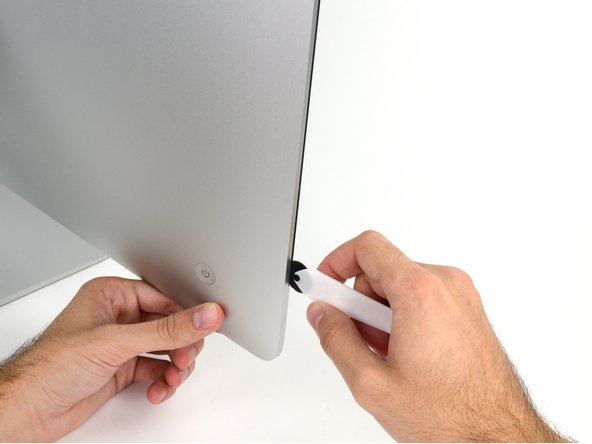



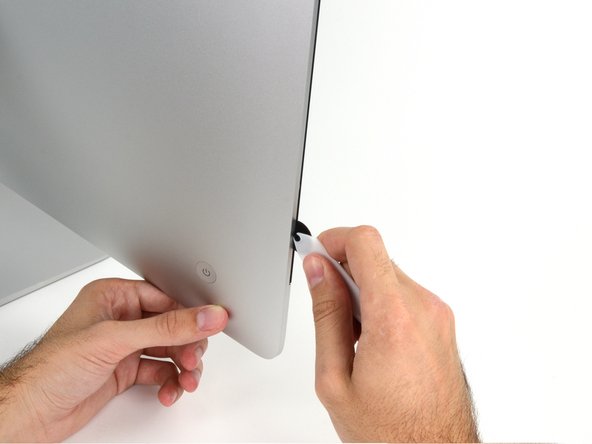



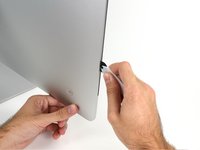
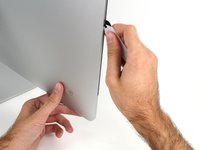



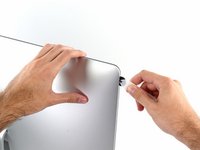
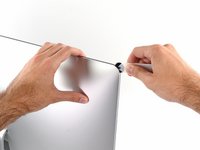




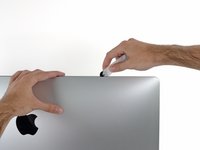


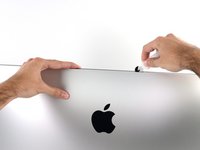
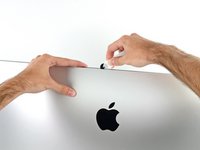



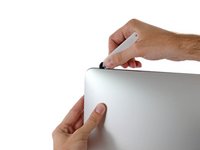
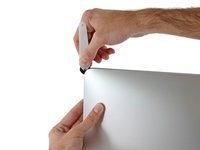
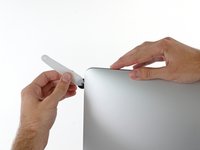


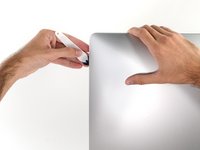
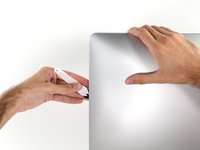

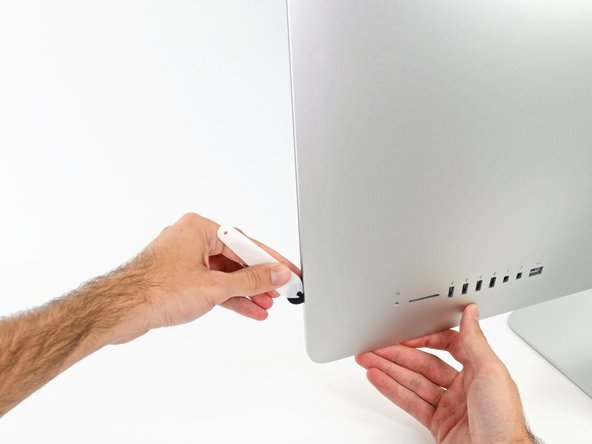
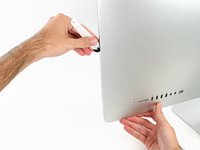
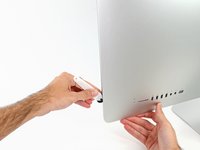




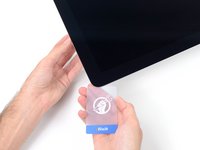
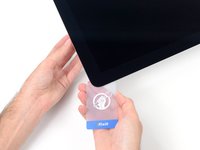
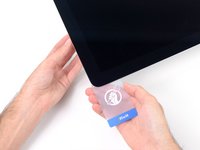


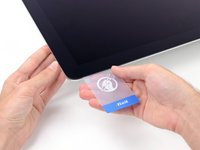
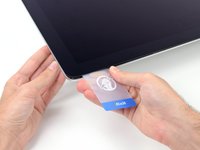
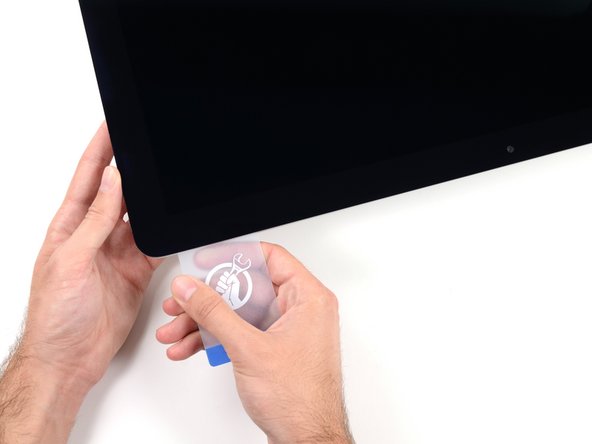

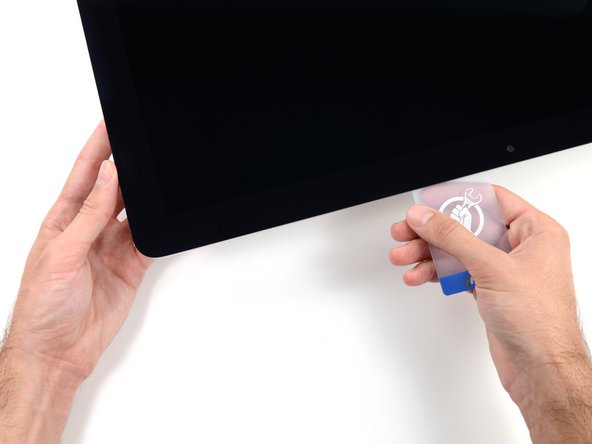
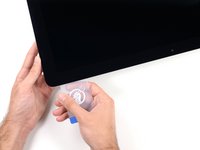
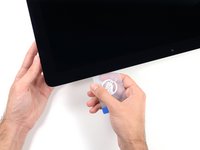
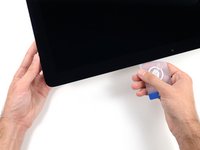


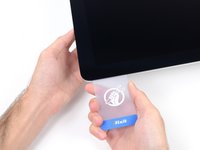
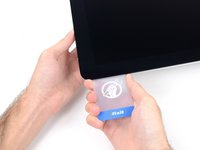



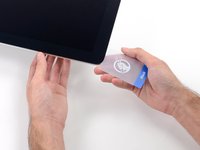
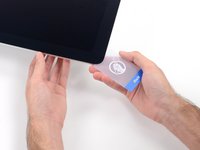
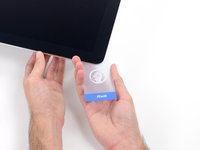


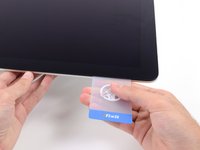




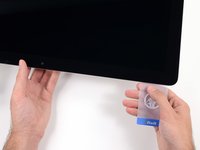
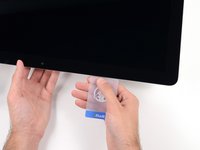
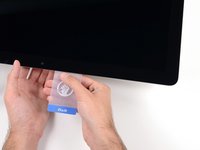


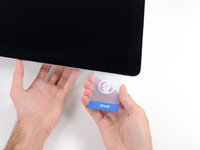
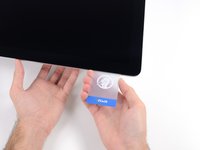



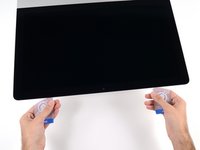
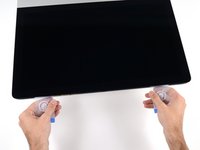
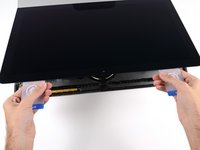


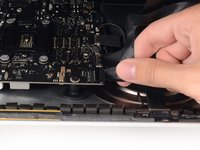
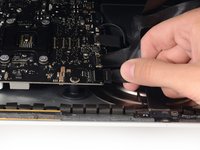



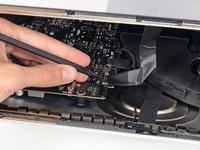
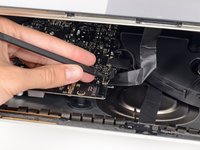
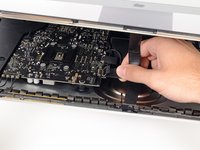


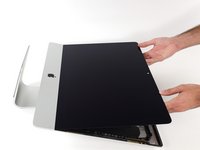
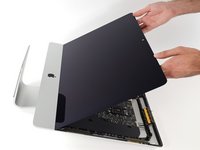
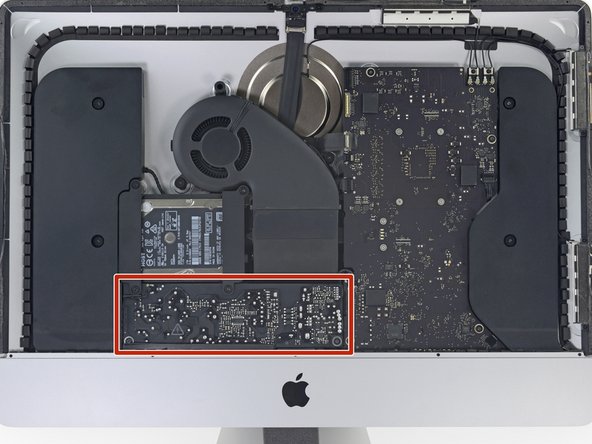


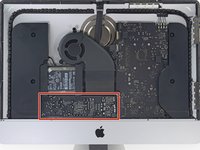
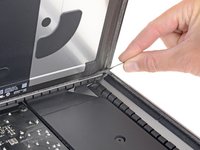
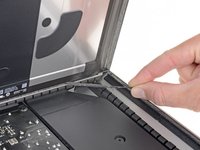



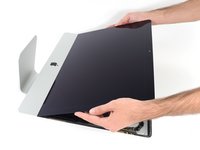
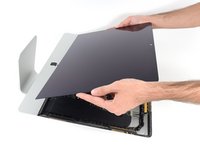
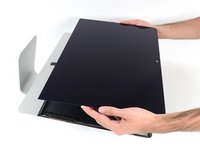







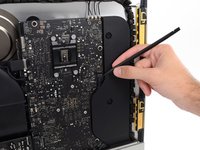
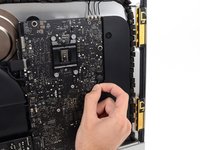



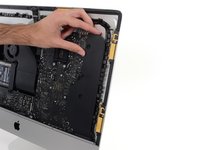
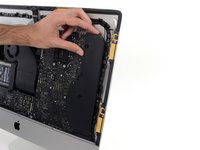



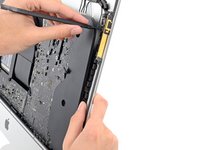
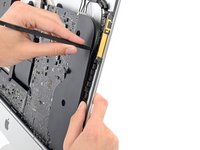
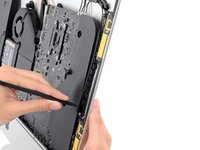



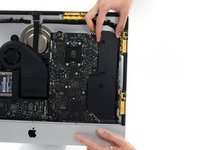
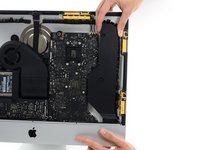
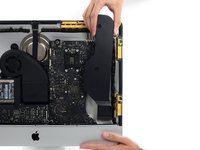
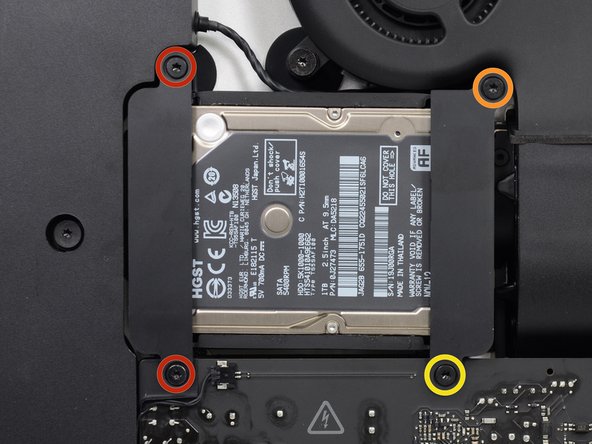







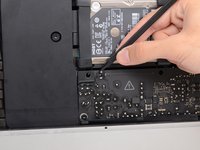
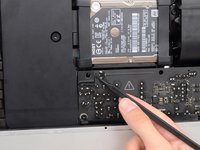
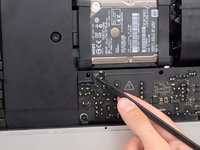

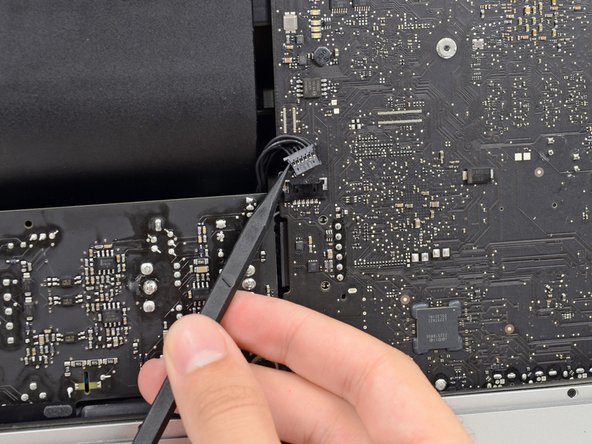
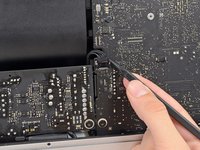
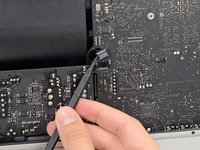



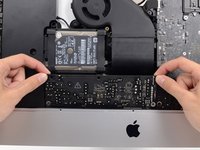
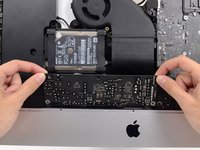



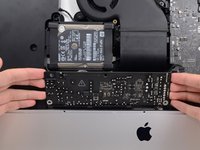
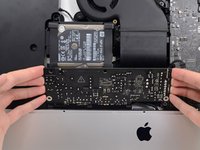
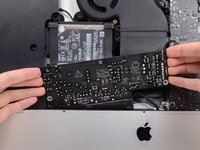

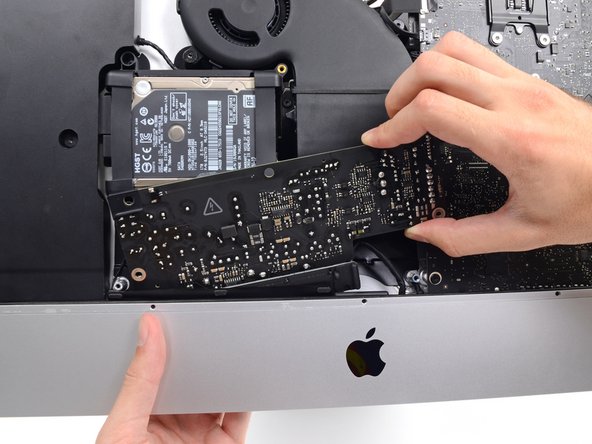
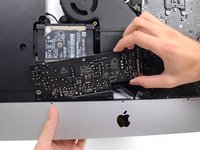
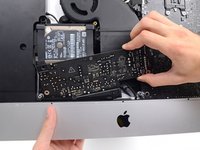

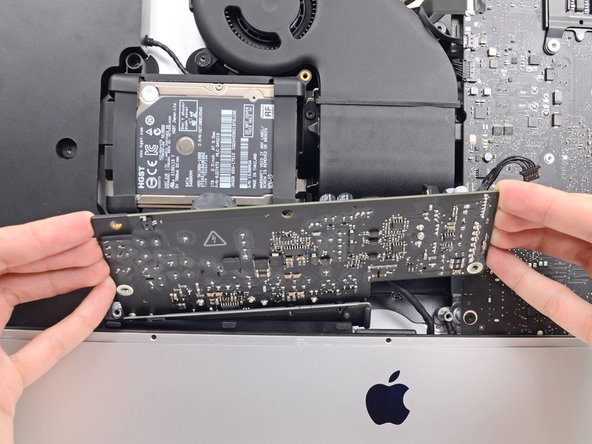
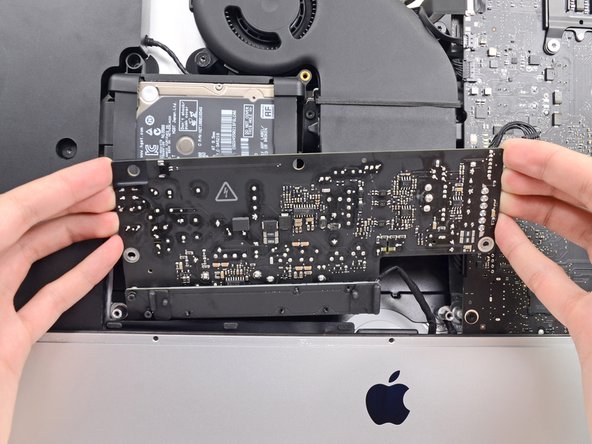
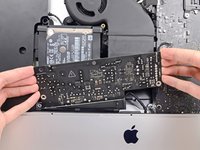
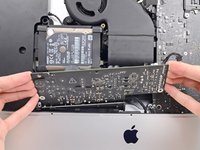
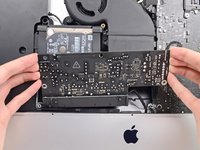

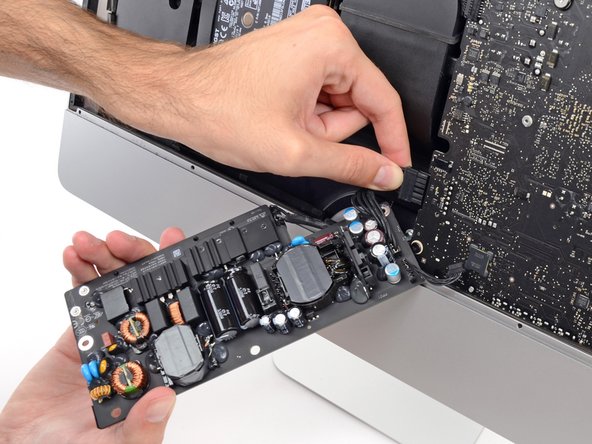
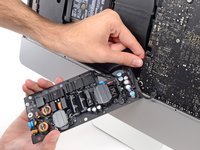
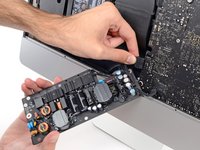

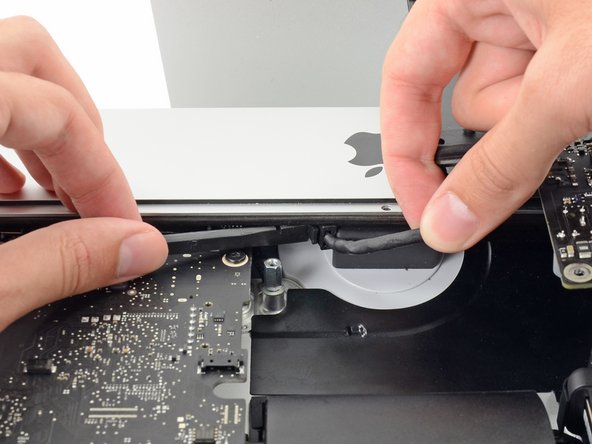
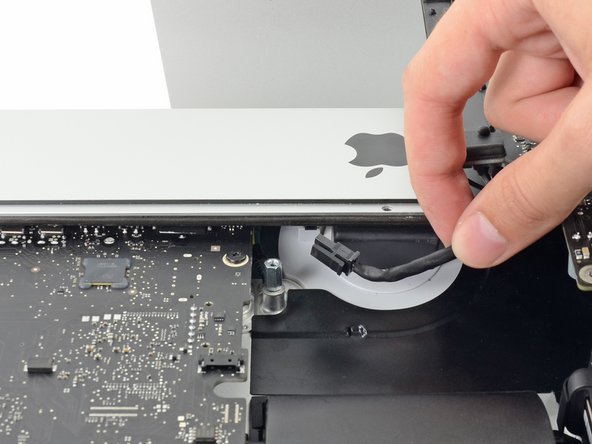
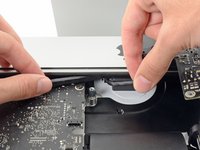
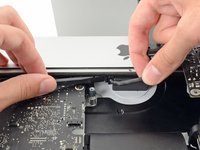
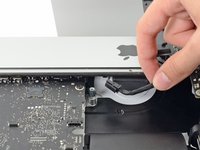







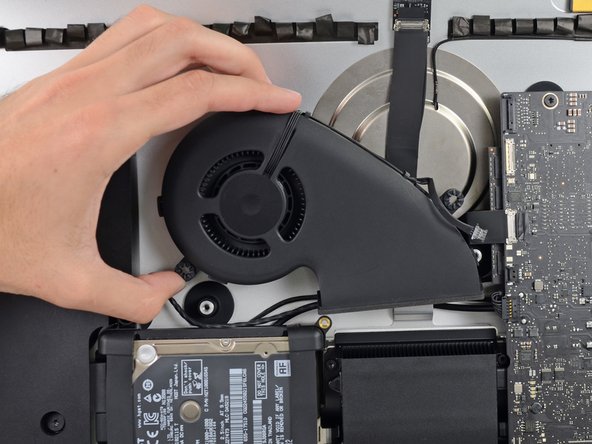
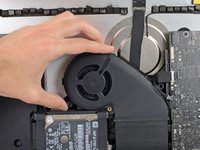
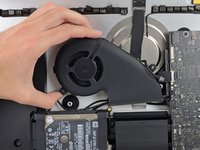

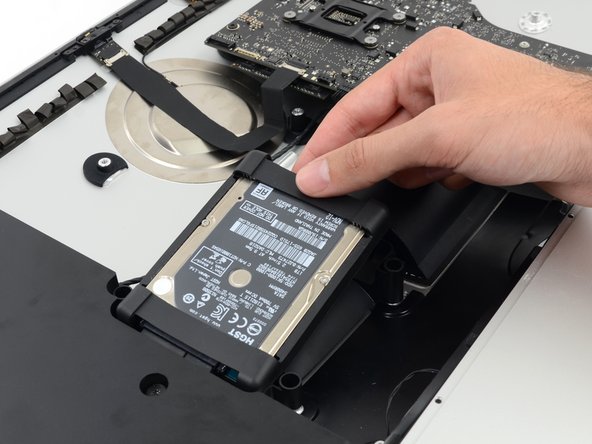
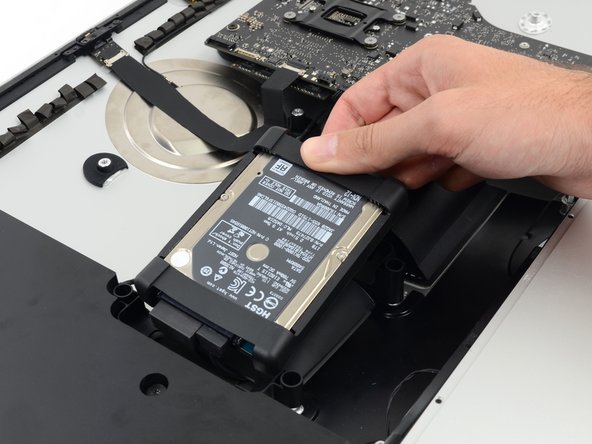




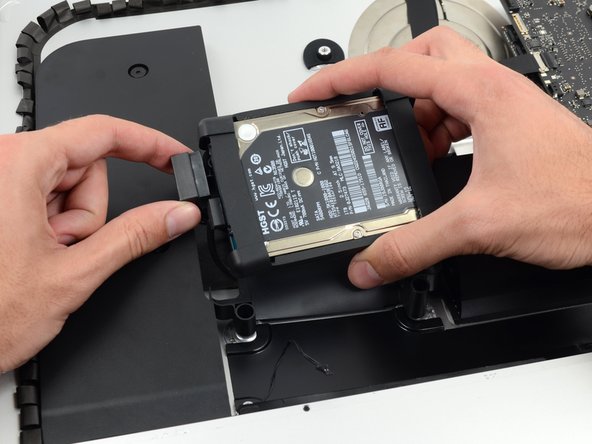



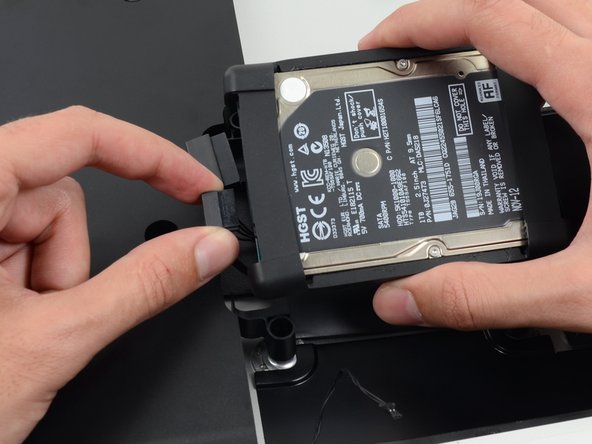
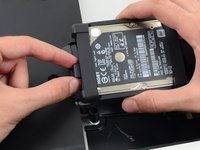
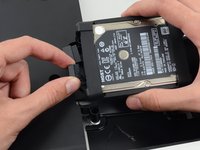




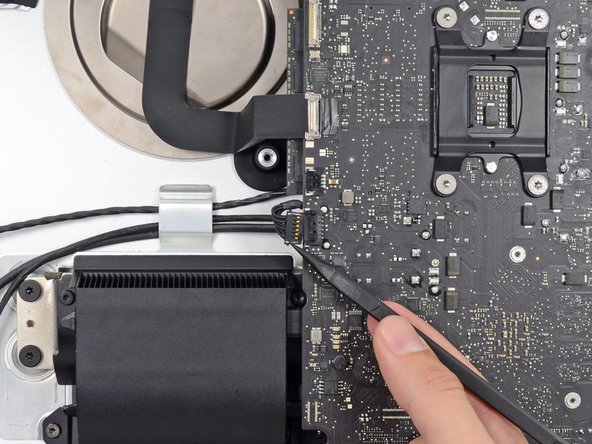









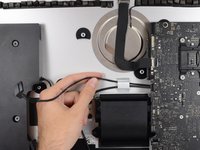
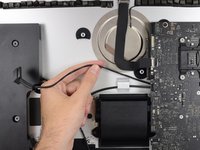
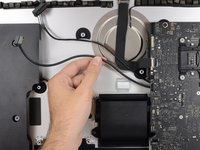



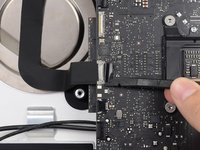

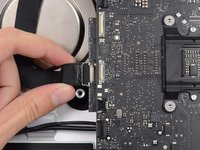

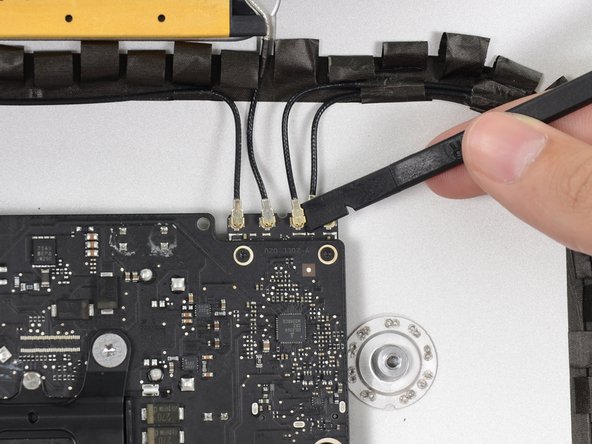
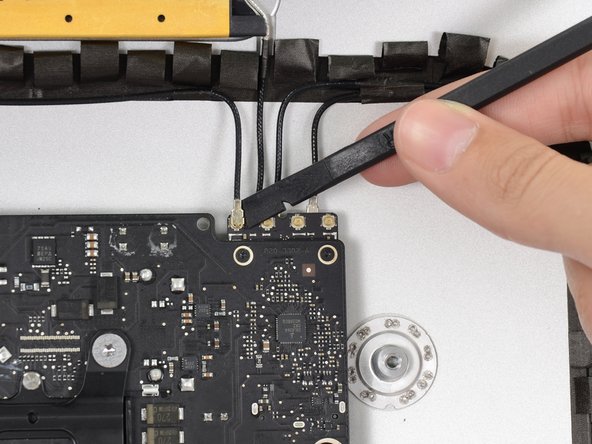
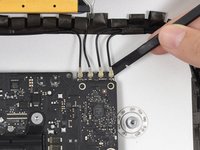
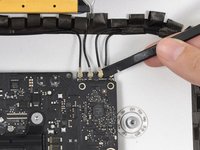
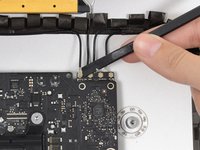



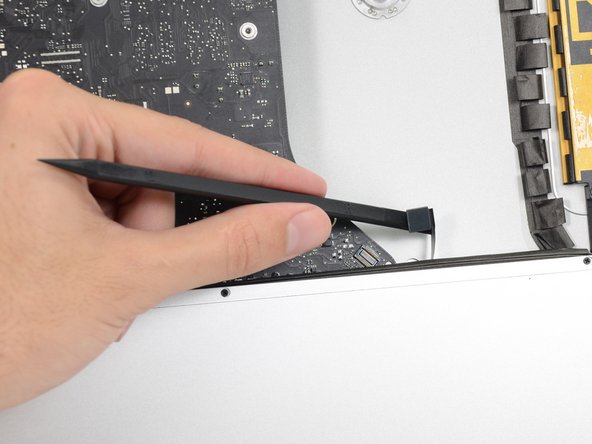
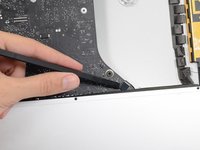
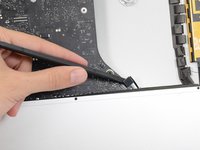
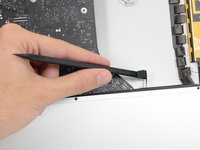



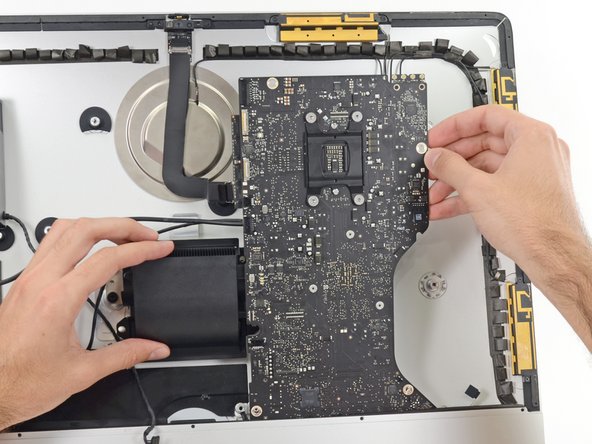
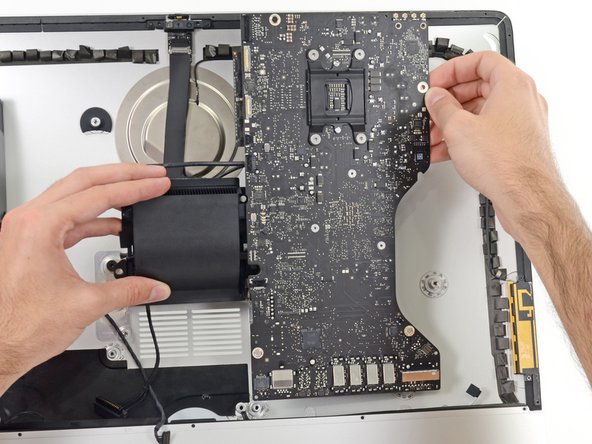
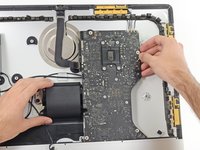
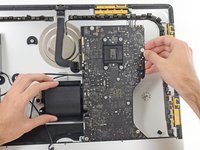
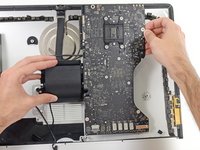




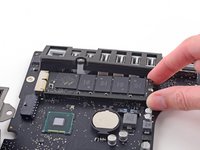
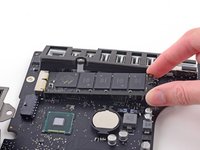
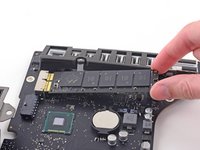

I have (21.5 inch, mid 2017, 2.3 ghz) base model same as this but not 4k. How much max ram can I install in my iMac??
Narendra Verma - Yanıt
This guide contains many extra steps for what should be a straight forward, simple parts replacement without disturbing more than the display, left hand speaker and removal of 4 logic board screws for play. Nothing else except for the left hand speaker wire & iSight cable from logic board, the lower support bracket and loosening the speaker so as to move it around a bit.
For the ram, I bent a pair of cheap tweezers long ago supplied with these replacement kits to the perfect angle for holding, locating and inserting the ram into the slots under the logic bd after moving each retainer w/spudger and popping out the old. Pay attention to the orientation of the ram when removing/inserting the ram! An automotive mirror is handy along with a small flashlight for closeups. Once the ram is aligned properly substitute your fingers for the tweezers, ease it into the slot, push up & engage! Reinstall screws and all else. I have done this job successfully this way countless times. For a tweezers pic contact me!
Ross Elkins - Yanıt
Additionally, if a blade is present, I install the OSx system on the blade and everything else, apps and home folders on the new SSD. You get the very fast boot off of the blade and the full ssd for all else!
Ross Elkins - Yanıt